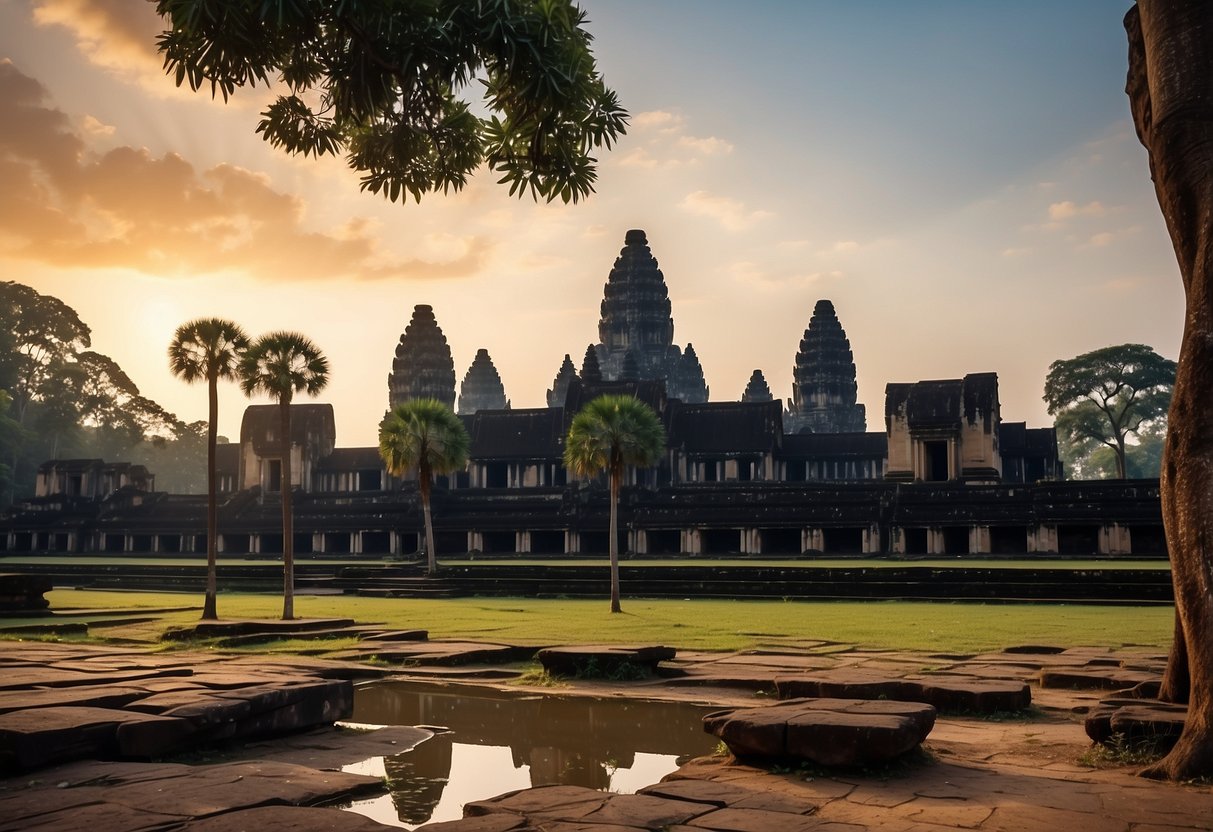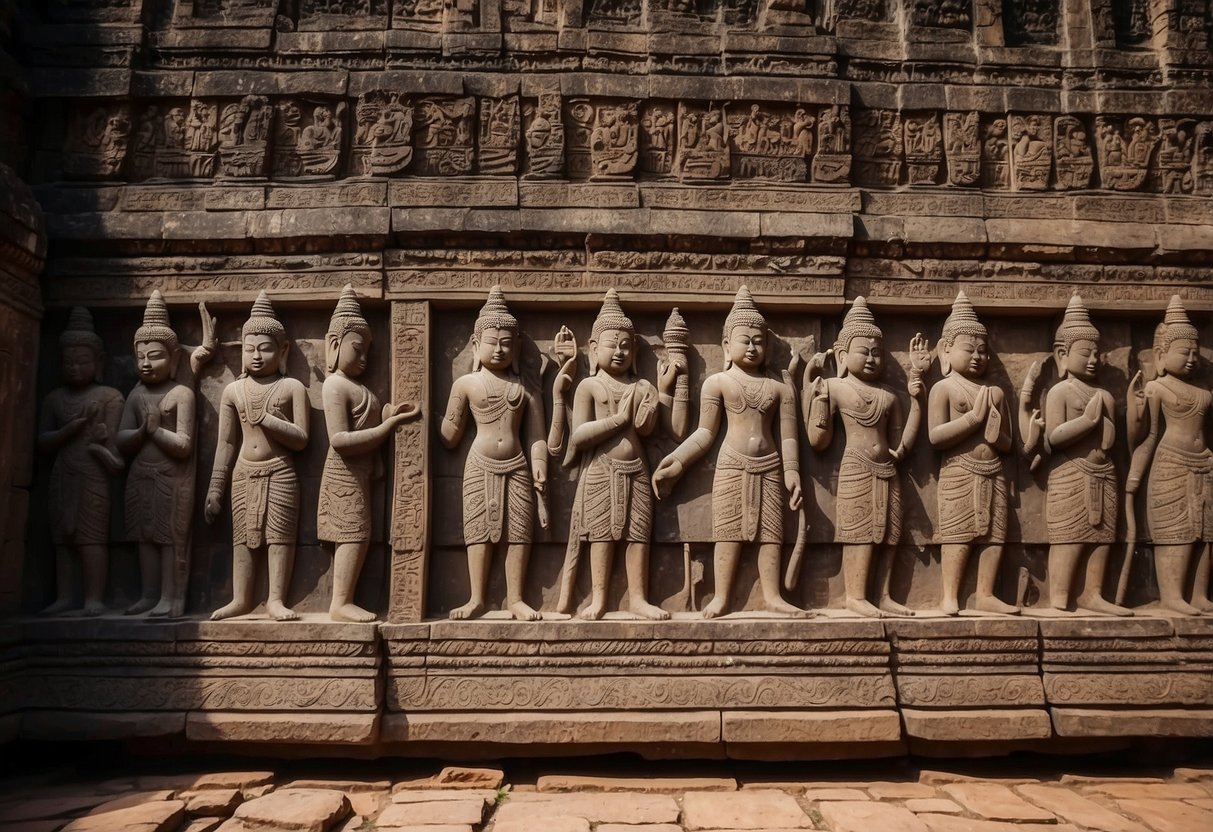
Angkor Wat: The Gem of the Complex
Angkor Wat stands as a symbolic representation of Hindu cosmology, with its grand architecture and intricate galleries depicting the epic tales of Vishnu. This section covers the architectural brilliance, symbolic meanings, and mythological elements woven into the temple’s design.
Architectural Elements of Angkor Wat Temple
The temple is renowned for its majestic towers and extensive galleries. The five central towers symbolize the peaks of Mount Meru, the home of the gods in Hindu mythology. Constructed using sandstone blocks, the temple features intricate carvings and bas-reliefs. The galleries are adorned with depictions of celestial dancers and scenes from Hindu epics.
The expansive moat surrounding the temple adds to its grandeur, symbolizing the cosmic ocean. The western orientation of Angkor Wat, which is unusual for Khmer temples, is believed to be related to Vishnu, who is associated with the west in Hindu belief.
Symbolism and Cosmology
Angkor Wat is a microcosm of the Hindu universe. The central quincunx of towers represents Mount Meru’s five peaks. The surrounding walls and moat mirror the mountains and oceans encircling the mythical mountain. Galleries within the temple illustrate the journey of the soul in the afterlife, with scenes from the Ramayana and Mahabharata.
Every aspect of the temple’s design, from its layout to its carvings, holds symbolic meaning. For instance, the 37 heavenly nymphs seen in the galleries symbolize various aspects of the universe and human existence. This careful symbology makes Angkor Wat a three-dimensional mandala.
Vishnu and Hindu Mythology
Angkor Wat originally dedicated to Vishnu, a major deity in Hindu mythology. The deity is prominently featured in temple carvings and galleries, which include scenes from the Mahabharata and Ramayana. The famous carving of the Churning of the Ocean of Milk showcases Vishnu’s role in the creation myth.
Vishnu is represented throughout the temple as a protector and preserver of the universe. His depictions are found in numerous bas-reliefs, where he is shown in various avatars. These iconographic elements highlight the religious significance of Angkor Wat in the cultural and spiritual landscape of the Khmer Empire.
The Tapestry of Angkor’s Art and Reliefs

The temples of Angkor Wat are adorned with intricate bas-reliefs that vividly depict scenes from famous epic tales and snapshots of ancient Khmer life, showcasing the artistic mastery of the era.
Stories Carved in Stone
The walls of Angkor Wat feature bas-reliefs illustrating episodes from the Mahabharata and Ramayana. These epics are meticulously carved, bringing legendary battles and divine adventures to life.
Skilled artisans sculpted these narratives in stone, presenting complex scenes filled with numerous characters and lush details. The southern gallery prominently displays the Battle of Kurukshetra, where the Pandavas and Kauravas clash in a detailed martial depiction.
Every panel emphasizes different elements of these stories, incorporating symbolic imagery and fine craftsmanship. Visitors can trace the tales through a series of interconnected visuals, each angle offering new insights into the stories and the artistry.
Depictions of Mythologies and Everyday Life
In addition to epic tales, the bas-reliefs also capture everyday life and mythological events. Scenes of Khmer daily life, from market activities to royal ceremonies, reveal the cultural richness of the time.
These carvings provide a glimpse into the social and religious practices of the ancient Khmer. Depictions of gods, celestial dancers (apsaras), and mythical creatures blend narrative and artistic elements to convey spiritual themes.
Intricacies in the clothing, accessories, and expressions of the figures further enhance these visual stories, bridging divine and mortal realms. The detailed illustrations serve as a historical archive, reflecting the sophistication and aesthetic values of Khmer art and society.